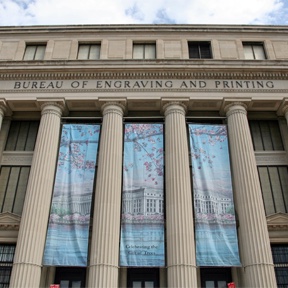SECTION 7
Introduction to monetary policy
Fiscal policy and monetary policy are the two main tools by which government attempts to steer the macroeconomy toward the three main goals and economic growth.
Monetary policy consists of methods through which the Federal Reserve attempts to engage banks, businesses, and individuals in effecting changes to interest rates, the supply of money, the demand for money, and so forth.
Money serves as a medium of exchange, a store of value, and a unit of account. Those three functions enable individuals to avoid bartering. The ways in which we define and measure money are important to managing an economy. Savings and investment are key elements within the circular flow model and are a function of interest rates.
Objectives
Upon successful completion of this and the following unit, you will be able to:
- compare and contrast as well as discuss fiscal policy and monetary policy;
- define the money multiplier, and explain the money creation process;
- distinguish between the types of money (i.e., between commodity money and fiat money), identifying examples of each;
- define money supply, and its related definitions (M1 and M2); draw and interpret a money demand curve, and explain how changes in other variables may lead to shifts in the money demand curve;
- explain and illustrate the relationship between a change in demand for or supply of bonds and macroeconomic activity;
- explain the functions of a bank, and describe a bank's balance sheet;
- explain the primary functions of the Federal Reserve, and describe the three tools it can use as part of monetary policy;
- explain how the bond market works, and discuss the relationship between bond prices and interest rates;
- describe the relationships among changes in money demand or money supply, in the interest rate, in the prices of stocks and bonds, in aggregate demand, in real GDP, and in the price level;
- identify and discuss domestic policies that contribute to economic growth;
- explain the linkages among income, consumption, and net investment, relating them to economic growth.
7.1 Introduction to macroeconomic policy
7.2 Monetary policy
7.3 Banks and the banking and Federal Reserve systems
7.4 Monetary tools
7.5 The money market
SECTION 8
Issues with monetary policy
Objectives
Upon successful completion of this and the following unit, you will be able to:
- describe how crowding out occurs and its connections to fiscal and monetary policies;
- discuss the arguments for side supply approaches to economic growth separating macroeconomic and microeconomic variables;
- describe the key components of the monetarist perspective; and
- explain why the Phillips curve is vertical in the long run.
8.1 Issues with monetary policy
8.2 Other macroeconomic issues
8.3 Interactive lab
SECTION 9
International trade
Trade among countries serves many functions aside from the exchange of goods and services at a global level. For instance, trade facilitates movements of foreign currencies held in a country's bank because imports are paid in the unit of the exporting country's currency. Additionally, trading partners have more and a greater variety of goods available to them. In short, those gains from trade arise out of comparative advantage, specialization, and export activities.
However, international trade can become and often is an emotionally or politically charged issue that cuts across microeconomics and macroeconomics; it is probably a good time now to recall the difference between them. Nonetheless, most of the content within this unit centers on the topic from an economic perspective and directs attention to factors such as trade balances, exchange rates, and other aspects of a country's macroeconomic performance.
Objectives
Upon successful completion of this and the following unit, you will be able to:
- compare and contrast and discuss absolute advantage and comparative advantage;
- explain how the foreign exchange market works, how it reflects changes in the demand for or the supply of a country's currency, and how it relates to a country's net exports;
- identify tariffs and quotas in international trade and how they relate to net exports;
- explain how comparative advantage relates to the gains from international trade; and
- describe the role of international trade in the exchange of currencies.
Introduction to trade
Absolute advantage and comparative advantage
Tariffs and quotas
